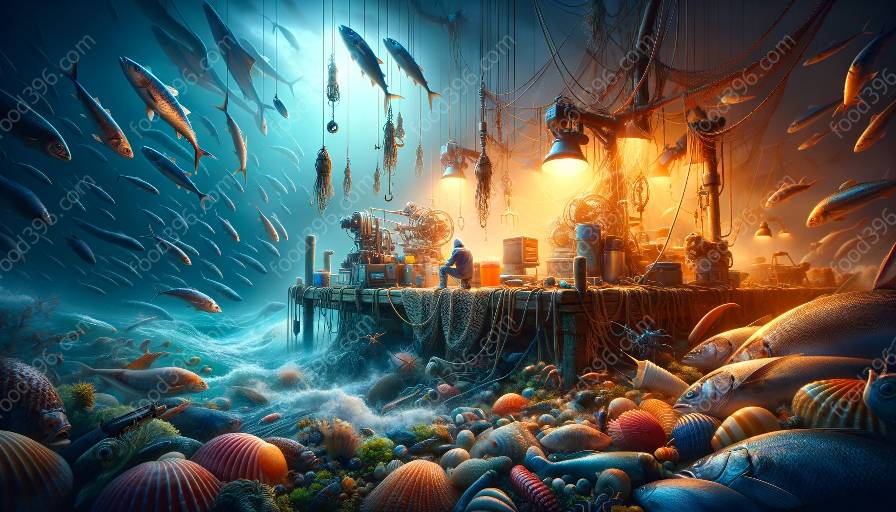Fishing lines and hooks are essential tools for anglers of all experience levels. They form the critical connection between the angler and their potential catch, and play a vital role in the success of any fishing expedition. In this comprehensive guide, we will delve into the intricacies of fishing lines and hooks, exploring their construction, different types, and applications in catching seafood. Additionally, we will discuss how fishing technology and equipment have revolutionized the art of fishing and examine the intersection of seafood science with fishing gear.
Understanding Fishing Lines
Fishing lines are the lifeline between the angler and the fish. Their construction, material, and design significantly impact an angler's ability to land a catch. There are various types of fishing lines, each with its unique properties, strengths, and weaknesses.
Types of Fishing Lines
1. Monofilament Lines: Monofilament lines are made from a single strand of material, typically nylon. They are known for their stretch, which can be advantageous in certain fishing scenarios, as it provides a cushioning effect when reeling in a fish. Monofilament lines come in various strengths and are suitable for a wide range of fishing applications.
2. Braided Lines: Braided fishing lines are made by weaving together multiple strands of material, such as Spectra or Dyneema. They are incredibly strong and have minimal stretch, offering excellent sensitivity and hook-setting power. Braided lines are ideal for fishing in dense cover or deep water where superior strength and abrasion resistance are required.
3. Fluorocarbon Lines: Fluorocarbon lines are virtually invisible in water due to their refractive index, making them an excellent choice for situations where fish are line-shy or when fishing in clear water. They also sink faster than monofilament lines, allowing lures to reach depths more quickly.
Fishing Hooks
The fishing hook is a simple yet ingenious tool that has evolved over centuries. Hooks are available in various shapes, sizes, and configurations, each designed to suit specific fishing techniques and target species. Choosing the right hook is crucial for effectively presenting bait and ensuring a secure hookset.
Types of Fishing Hooks
1. J-hooks: J-hooks are widely used in angling and come in a variety of styles, including circle hooks and octopus hooks. Their design makes them versatile for a broad range of fishing applications, from bait fishing to artificial lure presentations.
2. Treble Hooks: Treble hooks consist of three shank and barb sections, providing increased potential for hooking a fish. They are commonly used in lures for species such as bass, pike, and musky.
3. Circle Hooks: Circle hooks are renowned for their ability to hook fish in the corner of the mouth, reducing mortality rates for catch-and-release fishing. They are often used in saltwater fishing for species like tarpon and billfish.
Fishing Technology and Equipment
The evolution of fishing technology and equipment has transformed the way anglers approach their craft. From advanced sonar systems to precision-engineered reels, a wide array of tools and technologies are now available to enhance the fishing experience.
Modern Fishing Reels
1. Spinning Reels: Spinning reels, also known as fixed spool reels, are popular among anglers for their versatility and ease of use. They are suitable for various fishing techniques and can accommodate a wide range of line types and sizes.
2. Baitcasting Reels: Baitcasting reels offer precise casting control and are favored by experienced anglers for targeting larger species. They excel in situations where accuracy and power are paramount.
Sonar and Fish Finders
Advancements in sonar and fish finder technology have revolutionized the way anglers locate fish. These devices use sound waves to create visual representations of underwater structures, vegetation, and fish, providing valuable insight into the underwater environment.
Seafood Science and Fishing Gear
The intersection of seafood science and fishing gear is an area of growing importance, particularly concerning sustainable fishing practices and the conservation of marine ecosystems. Understanding the impact of fishing gear on targeted fish species and non-target species is crucial for responsible and ethical fishing practices.
Bycatch Reduction Technology
Developments in fishing gear design aim to minimize bycatch, which refers to the unintended capture of non-target species. By implementing specialized gear, such as turtle excluder devices and modified trawl nets, fisheries can reduce the negative impact on non-targeted marine life.
From the construction of fishing lines and the intricacies of fishing hooks to the technological advancements in fishing gear and the ethical considerations of seafood science, the world of angling is a rich tapestry of tradition, innovation, and responsible stewardship.

